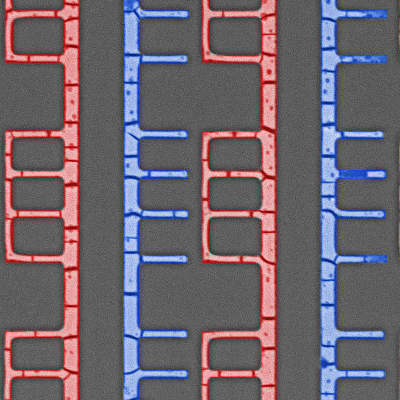Dropletronic technology for new biocompatible devices
Nov. 28, 2024.
2 mins. read.
3 Interactions
Dropletronic technology could help build devices that can interact with biological systems in a way that's friendly to living tissues.
Oxford University researchers have studied tiny, soft droplets made of hydrogel that can carry out functions similar to electronic devices but using ions instead of electrons.
Ions are atoms or molecules with an electric charge, like sodium or calcium, which are crucial in biological processes like nerve signaling.
This technology could help build devices that can interact with biological systems in a way that’s friendly to living tissues.
Traditional electronic devices can’t easily integrate with soft, living tissues because they are often rigid and not biocompatible. Ions are naturally present in and around cells, which could make these “dropletronic devices” more bio-friendly.
Dropletronic devices are made from hydrogel droplets, about the size of a small grain of sand, and are manipulated using surfactants (like soap). They could form structures that can perform as diodes, transistors, and even memory storage units. These components are key in electronics for controlling, amplifying, and storing electrical signals, but here they work with ions.
The researchers describe the methods and results of this study in a paper published in Science.
The researchers used dropletronics to sense electrical activity from human heart cells. This shows how these devices can communicate in the same “ionic language” as biological cells.
Dropletronics has vast potential
Ions can do more than electrons because they come in different sizes and charges, allowing for more complex functionality. This could lead to devices with memory capabilities, much like how our brains work. This could help build neuromorphic computers.
The researchers “demonstrated a dropletronic device with long-term memory storage,” says research leader Yujia Zhang in an Oxford University press release. This “offers an unconventional pathway to neuromorphic applications.”
Dropletronics could revolutionize drug delivery systems by precisely responding to biological signals. This fusion of electronics with biology might pave the way for devices that can sense multiple biological markers and react appropriately. This could be groundbreaking in clinical medicine.
The researchers are persuaded that dropletronics could open up a new chapter in bioengineering, where the lines between living organisms and technology blur.
Let us know your thoughts! Sign up for a Mindplex account now, join our Telegram, or follow us on Twitter.


.png)

.png)


.png)






0 Comments
0 thoughts on “Dropletronic technology for new biocompatible devices”